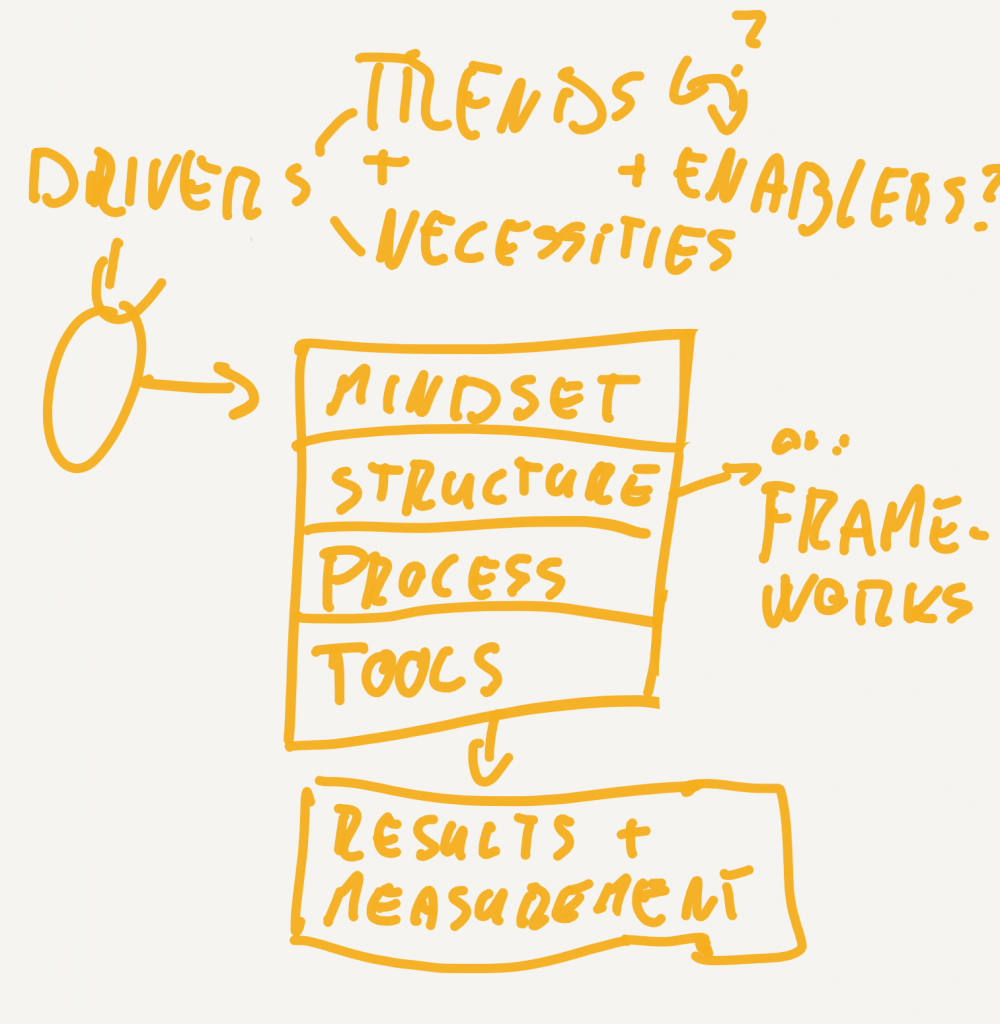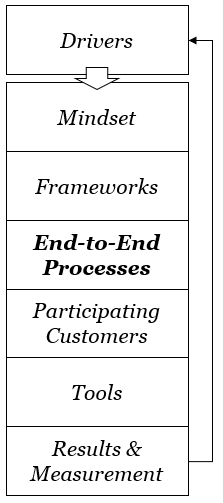Gathering the insights from 20 different publications called for a structured approach. This became apparent by the third reading – but I had no idea what this structure should look like until halfway through the readings. Than I started sketching out something…

I iterated on the sketch as I progressed in readings. The final system through which I structured the materials is below. You will see this a few more times if you’ll read more.

- Drivers are what make co-creation worth exploring or practicing.
- These lead to a Mindset that leaders need to adapt.
- To understand how co-creation fits with existing practices, Frameworks are needed.
- In order to implement co-creation in an organization’s end-to-end systems, both on the frontstage and the backstage[1], Processes are required (spoiler alert – this is what I will focus on, and it is largely missing from most reviewed material).
- As this is a very human-centred, new, multi-actor discipline, attention on People is important.
- Practical implementation relies on a plethora of individual customer-engagement tools.
- And finally, Results and Measurement are needed, which should link back to and become drivers.
Different authors usually focused on only a subset of the above, but often reference other elements as well. This system is not meant as a proposal for structuring co-creation practices in general. But it did help me, and could be valuable for senior business professionals to understand co-creation’s implications. In the next few posts I’ll detail each one by one.
[1] In service design, “frontstage” is used for the processes that involve the customers and consumers, while “backstage” is used for internal company processes.





















[…] below illustration, a version of my literature review structure highlights each layer’s main elements, as identified during […]